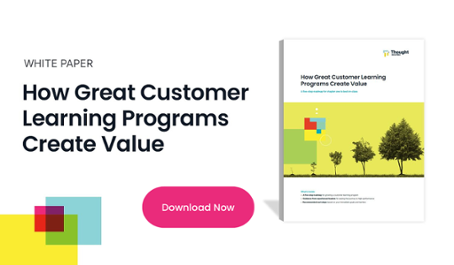Window shopping for a new LMS? There are generally two main reasons why you might be rethinking your existing situation when it comes to learning technology. Either you’re drowning under the overheads and technical debt of operating a homegrown LMS, or you purchased something off-the-shelf that (surprise!) doesn’t have the flexibility and control that you need.
If you can’t get the right features and updates out the door as quickly as the market demands, you’ll quickly fall behind. Here are 12 telltale signs that it’s time to kick that old LMS to the curb, and invest in something that’s a better fit for your business.
- Your legacy system was made for internal L&D: An LMS that isn’t built for external learning, and specifically aimed at customers, members or partners, will never fit your learner’s needs. Supporting a solution that is aimed at employees means you need third party workarounds for everything from monetization to user engagement. If your solution feels too clunky, there are better tools on the market.
- You can’t offer learning everywhere: Your end-users want to learn in the moment of need, not just in a classroom. If you can help learners access learning on any device from any location, this will increase efficiency and improve engagement. Mobile is table stakes, but what about in-product, or via new technologies such as AR, VR, and IoT devices?
- You’re juggling multiple vendors: Not every LMS can consolidate all of the functionality you need to create, manage, and deliver online learning experiences globally. Avoid paying and managing multiple vendors by choosing a platform with integrated tools for site building, content authoring, monetization, reporting, and business intelligence.
- You can’t measure the impact of your learning: Online learning administrators need robust reporting tools in order to track learner progress and make smart business decisions based on ROI. Learners also demand analytics that can track course progress and completion. Decide which reporting is important to your business—learner dashboards, engagement tools, site metrics, key performance metrics (KPIs), etc.—then choose an online learning technology which enables that reporting.
- You can only realize 70% of your design vision: Restrictive homegrown or cookie-cutter LMS technology requires organizations to build courses using third party systems, then upload to the LMS, or forces the business to compromise with pre-made templates and workarounds. A modern, headless LMS offers complete design freedom, so you can get 100% of the picture in your head in front of your learners.
- Your customization options are limited: Clients and learners crave customized learning experiences. If your current LMS doesn’t enable your organization to update the user interface, and to white label and brand learning environments, find an online learning technology that does. A fully white labeled experience will improve engagement and the overall experience for clients.
- You have narrow administrative control: Your organization might need the ability to manage multiple courses, multiple clients, and different administrator permissions. An LMS which gives you a holistic view of your entire learning ecosystem and allows for this level of customization will bring some peace of mind. Sophisticated admin features will also help with functions like importing clients, setting admin levels, and more.
- You can’t be flexible around monetization: If your platform can’t handle multiple currencies, payment options, purchases made with training credits, or new business models such as subscriptions or training bundles – you’re not going to be able to monetize effectively. The best LMS allows you to tailor your packaging and pricing structure according to granular needs, rather than be locked in with pre-configured options alone.
- You’re drowning in operational overhead: It takes large development teams to build and maintain homegrown systems, and we don’t need to tell you that building from scratch takes time. This is all money that could be better used elsewhere by leaning on a partner who can provide it all out of the box. You just need to make sure the platform is flexible enough to meet your specific requirements for learner experience and scale.
- Your time to market with innovation is slow: When you build in-house, you can’t avoid technical debt. This means developers are focused on fire-fighting instead of working on innovation. While competitors launch new features and updates, you’re left just trying to keep the wheels turning. A cloud-based LMS means maintenance is someone else’s problem, and you can focus on instructional design and delighting the end user.
- You’re finding it hard to keep learners engaged: Engagement is everything for today’s learners, who will quickly switch off if you can’t keep them on the ball. Online learning technology that enables gamification, the creation of interactive content, adaptive learning paths or the development of custom learning experiences will help learners stay engaged.
- You’re worried about security and compliance: When you’re handling sensitive personally identifiable information (PII), you need to be able to meet specific regulatory requirements that change all the time. An extensible software platform gives you greater control over data privacy and system access, and reduces the reliance on third party processes to protect your environment.

When your LMS has limited functionality and lacks important features, it’s hard to scale an online learning business. After going through the list of pain points above, decide where your organization feels limited, and talk to different technology vendors about how their online learning offering can help.
Not settling for subpar tech starts here. Schedule a demo now.



